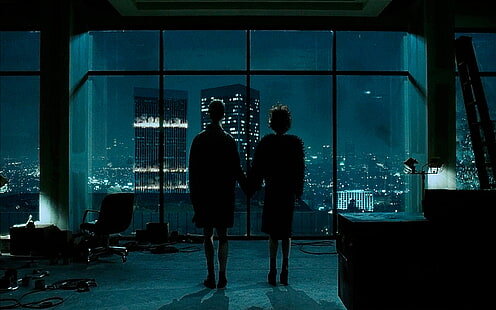A “Single Serving” Review on Tyler Durden’s Impact
Fight Club, the film directed by David Fincher and released in 1999, has held a spot in modern American culture for the past 20 years, but why? It’s filled with fighting and abrasive behavior, but also holds undertones of being a modern commentary on society in the new millenia. The plot is developed in an abstract way, sprinkled with clues. Not only is the style of the film unique with its color palette and non-linear plot, but it also has a very clever script with lots of foreshadowing. The film follows Jack (Edward Norton), a young male white collar worker who struggles with his consumerism ideology after losing his house, and Tyler Durden (Brad Pitt), who seems to be a jack of all trades and a man who relies on his natural strength and unusual knowledge.
Jack and Tyler Durden first meeting
In the beginning you are quite literally thrown into Jack’s mind and life. It holds an overall bland color palette until he meets Tyler Durden. We then switch to a dark palette with lots of blue tones as Jack becomes a part of Tyler’s life and introduced to his way of thinking and living. When Tyler is first introduced on screen it’s no secret he almost despises the consumer lifestyle and feels as though it’s almost emasculating. The storyline is then driven by this goal of becoming more masculine and less dependent on society as Tyler views modern societal roles and norms to be ruining men and pushing them into feminine roles. This film is the embodiment of the male gaze, quite literally empowering men and objectifying women, or at least the one major female character they have in the film. Meet Marla Singer (Helena Bonham Carter), Tyler’s sexual partner as well as Jack’s romantic interest.
Tyler Durden and Marla Singer
Besides including a sequence with the sounds of Marla’s moans, we also hear Tyler and Jack make numerous objectifying quips about and towards Marla. From the female gaze it’s easy to become queasy at how Marla is treated throughout the film, but this film is not for the female gaze. To watch this film and understand it you have to watch it through the male gaze.
Before watching Fight Club you might’ve been expecting to watch a movie about an underground boxing club, and the chances are you already knew the first two rules of Fight Club before watching it. Which that’s not to say that Fight Club wasn’t that, because it was, but it was much more than that too. By watching it through the male gaze and through a cinematic perspective you can tell that not only is Tyler Durden’s character important to the masculine tones but so is the lighting and color palette. Blue is often considered the color of men in America’s society, and the dark lighting makes the scenes tougher and more rigid adding a masculine tone. Choosing not to use lighter blue tones in this film wipes away any chance of innocence typically associated with baby blue or other light hues. Instead we see the raw, darker side of masculinity as men spill blood in the fighting rink and even risk their lives to feel like “true men”. Not only does this film address masculinity and what it means to be a man, but also criticizes modernity. Tyler Durden states multiple times how he feels about working, consumerism, and even comments on our “natural lives” or what life was like before modern civilization. Many viewers took Tyler Durden's philosophy on life to heart and some even saw Durden as a male role model. You can still see flashes of Tyler Durden, his philosophy, and character, mirrored in our society twenty years later.


